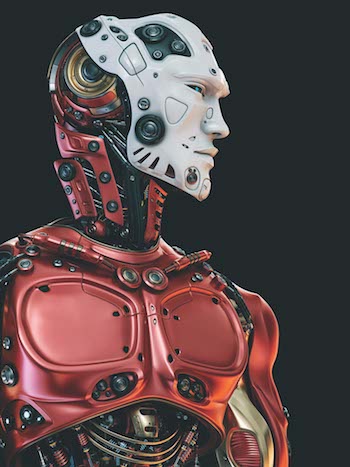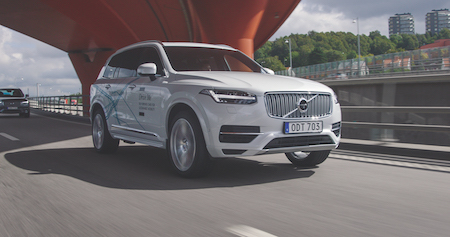European Background
The issues of liability, intellectual property rights, and safety emerge as some of the leading factors in the call for the EU to lead the way. The need for the EU to attend to robotic systems sooner than later comes in the wake of the knowledge that other countries such as the US, South Korea, China, and Japan have already considered these regulatory issues and even taken some action. Along with the regulations suggested by the parliament, the establishment of a European agency for robotics is also put forward.
This paper is significant as it comes in the wake of a series of aviation authorities across the continent publicly calling on the EU for a strong framework regulating drones to be instituted across the whole continent. Both groups have noted that national frameworks are present, but that with cross-border complications, a framework that extends beyond would allow a greater degree of implementation as well as the resources to initiate actions such as public awareness campaigns. Engagement with the public is seen as essential in that regard.
The report opens by noting the sharp increase to 29% in robot sales in 2014 as compared to 17% per year between 2010 and 2014 as well as a forecast that by 2020 Europe might face a shortage of 825,000 ICT professionals. It remains to be seen how employment and industry in Europe will be affected by the increasing use of robots in the coming years, but the global trend is to be proactive with establishing legal frameworks and the EU has proven itself to be no exception. If this paper is put into action quickly, it could even lead the way.
Liability
One of the most important issues to be resolved is liability, and how far it can be attributed to robotic systems. The European Parliament’s report even goes so far as to consider regarding certain autonomous robots as being sophisticated enough to qualify as “electric persons” to help deal with this issue.
Having a common European definition of what constitutes a smart robot is needed to act as a baseline, taking into account a robot’s ability to:
- Acquire autonomy;
- Learn through experience and interaction;
- Adapt its behaviours and actions to its environment.
This would be coupled with registration of all “smart robots” that fit into the definition, for the purposes of traceability, and should be managed by an EU agency for robotics, which would then be able to assist in the cases of liability.
As robots take on greater responsibilities, performing those jobs deemed dirty or dangerous, safety of human counterparts is one of the prevailing concerns. The injured party would need to claim compensation, which would naturally have to fall on the manufacturers, rather than the robotic systems themselves.
To counter such incidents, the report recommends the establishment of a system of compulsory insurance, similar to the system for automobiles, with the obligation placed on the producer of the robot, backed up by a compensation fund for those instances where insurance has not been provided in an accident.
Intellectual Property Rights
The paper recognises that there are no legal provisions needed that specifically apply to robotics and that existing legal structures can be readily applied, but there may be other cases which will need more specific consideration. It wants the Commission to create a balanced approach towards IP rights as applied to hardware and software, with the protection of innovation seen as vital.
Criteria for the “intellectual creation” for copyrightable works created by robotic systems or AI are noted as being essential too, in the light of forecasts of their increasing rates of intelligence and expanding proportion of the workforce within the next ten years.
Vehicles
Cross-border cooperation is considered essential to the successful delivery of autonomous vehicles’ economic benefits, as well as increasing the safe use of UAVs. The fragmented nature of differing national regulations hinders the implementation of these factors and leads naturally to the call for a centralised European agency to implement continent-wide regulation.
Care and Medical Robots
The importance of the roles fulfilled by such robots is underlined, paying attention the fact that the use of care robots has the potential to dehumanise caring practices through the simple lack of human contact.
Also underlined is the need for the highest levels of training to be applied to the use of medical robots. In addition to the need for a European agency and registration of robots, it is likely that a system of licensing for the use of medical robots would also be implemented at a later stage, as their capacity to take on larger tasks (such as diagnosis) or tasks that deal with altering the human body (repair of organs etc.) grows.
Rights
One of the more contentious points in the paper is the idea that robotic systems which are defined as “smart robots” should be granted certain rights which would give them a status of “electric persons”. Is this too early a time to be considering something that has always been in the realm of science fiction? Is it even a good idea to be starting to think of robots as people?
The issue of what constitutes a person is obviously vital to the discussion. Taking Peter Singer’s approach – where being human is not necessary to qualify someone as a person – is a logical step if we are to think of robots as people.
According to Harvard Law Professor Glenn Cohen, instead of being “all-or-nothing” personhood should instead be thought of as a bundle of sticks, with each stick representing different rights. Which sticks (i.e. rights) an entity was assigned might depend on what elements of personhood (or, if you prefer, where on the continuum of personhood) the entity possessed or could possess. With robots, there is a need to be specific about the capabilities of the robots, and how that relates to which rights they are granted.
This is reflected in the report’s own focus on specificity of robots’ capabilities, and how they can affect liability. Responsibility is drawn in line with capability, and whether the capacity for harm is part of the robot’s design or something emergent. The former is what the report seeks to regulate and place liability on the designer; the latter is not yet something that we can account for with current robotic systems, but perhaps there is a need to place some foundations for future legal frameworks.
The EU’s report also states the need to have different regulations for different categories of robots, differentiating between RPAS (drones), self-driving cars, medical robots, and so on. A “one-size fits all” approach is likely to be unsuited to robotic systems, especially where there are strong concerns about safety that tend to arise not from misuse but from the points where humans and robots interact in a working environment.


.jpg)
.jpg)
.jpg)

.jpg)
.jpg)



